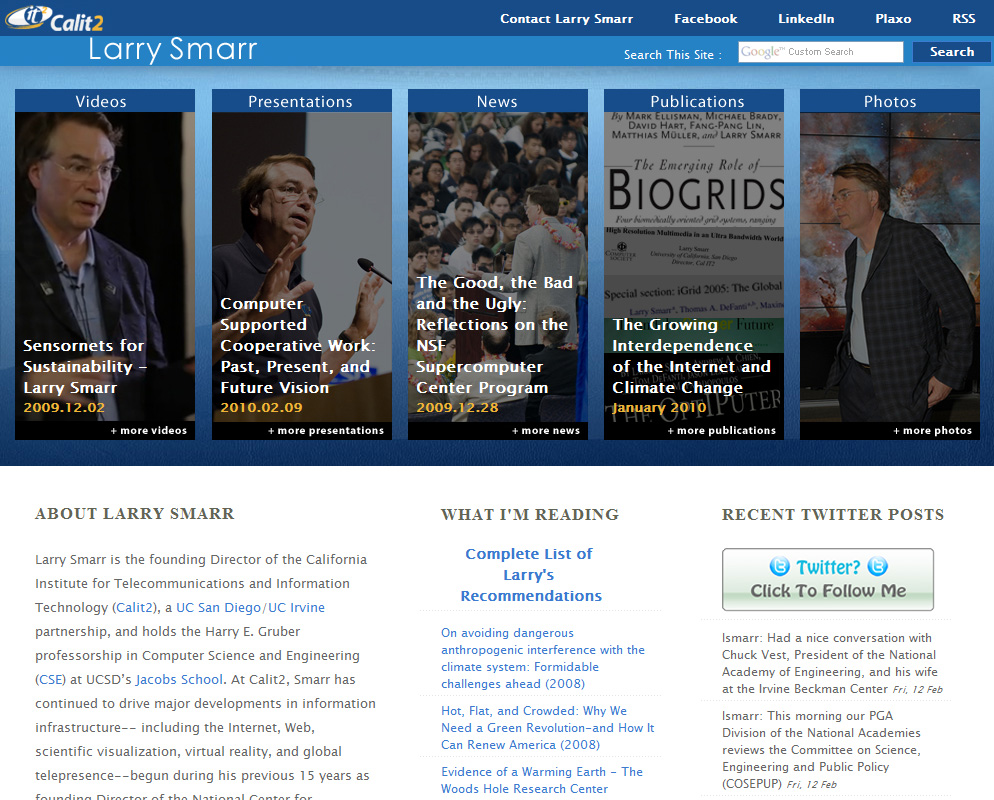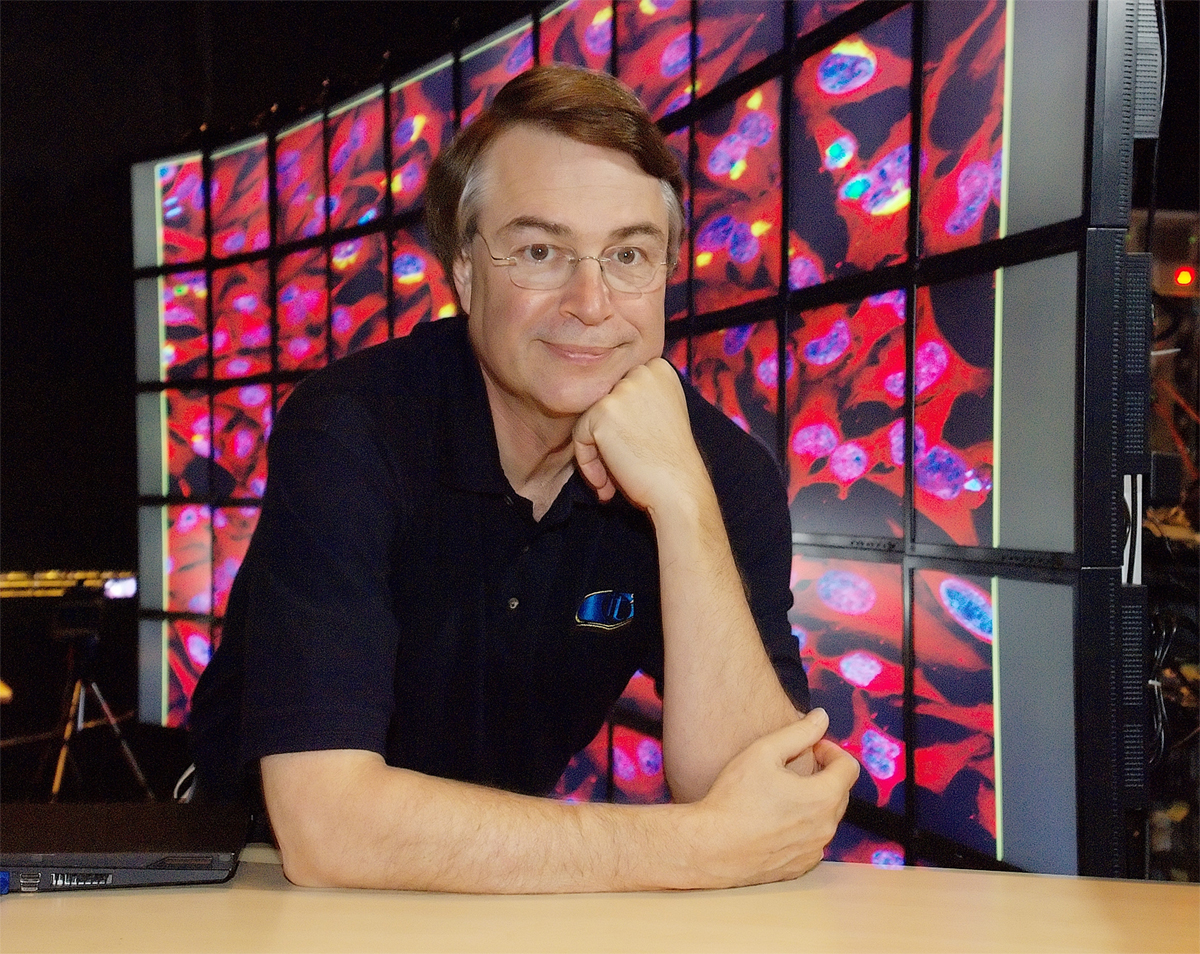Larry Smarr 24/7: Calit2 Director Launches Lifestreaming Portal
Mash-up Leverages Open Tools from Search and Social Networking
San Diego, Feb. 17, 2010 -- Internet pioneer Larry Smarr is plunging into the social-networking universe with a new website that will be updated continually as information about him – and from him – hits the global infosphere.
Smarr is the founding Director of the California Institute for Telecommunications and Information Technology (Calit2), a partnership of the University of California, San Diego and UC Irvine, which will celebrate its 10th anniversary next December. He is also a professor in the Computer Science and Engineering department of UCSD’s Jacobs School of Engineering.
|
The new web portal – http://lsmarr.calit2.net – builds on many of the tools that have become integral to the sharing of news, information, photos, videos and other artifacts of the modern Internet. The end result: a site that communicates Smarr’s work to the world – relying almost exclusively on open IT infrastructure that lives in cyberspace.
“The new site also lets me cross-link different types of digital media. For instance, if you go to a video of me giving a talk, you will find next to it the Powerpoints or html of the talk, so you can follow along a high resolution slide set while listening to my comments on them,” said Smarr.
|
"It’s also a two-way street. Calit2 posts all Smarr-related content on sites that have existing open services (via APIs): Photos on Flickr, Powerpoint presentations on SlideShare.net, videos on YouTube, as well as news and blog posts from Google alerts are all updated daily. The Twitter RSS feed is updated in real time. In doing so, information about the Calit2 director’s activities is shared openly and dynamically with users of those websites, and Smarr pulls the information back into his new website using the available APIs.
“A couple of years ago it would seem counter-intuitive for me to post my own content on sites where I lose some control over my work,” explained Smarr. “But the benefits far outweigh the disadvantages. On the Internet today, having an ‘open’ approach to information means that people I have never met can build on my research by ‘remixing’ slides and video segments into their presentations. By constructing a personal website on all of the information tagged with my name on servers around the world, we have been able to automate many of the functions necessary to keep the website current.”
Some features on the new site do require Smarr’s attention. He regularly updates “What I’m Reading,” his recommended reading list (currently featuring many titles focused on technology and climate change). It is also difficult to completely automate the updating of media clips that mention him for the “In the News” section: the Google API does not screen out mentions of another widely quoted “Larry Smarr” (who works in the medical industry), and often it returns citations about Joseph Smarr (Larry’s son, who recently joined Google after being the chief technology officer of social-networking site Plaxo).
Until the technology makes such flubs a thing of the past, Smarr and his staff will moderate those sections of the website that need oversight.
By using the social networking and search sites so fully, Smarr can also keep close track of visitors to his site, and what they are interested in, because Google Analytics allows him to monitor which photos are being viewed, which slides are being downloaded, and so on. “Having the analytics helps me know which topics have the most interest globally, allowing me to adjust my coverage accordingly,” said Smarr. “It also greatly increases those whom I can reach. My most-watched video on YouTube -- over 3,200 views – has been seen by over 100 times the number of people who were in the physical audience when I gave the talk!”
Related Links
Larry Smarr Lifestreaming Portal
Media Contacts
Doug Ramsey, 858-822-5825, dramsey@ucsd.edu


